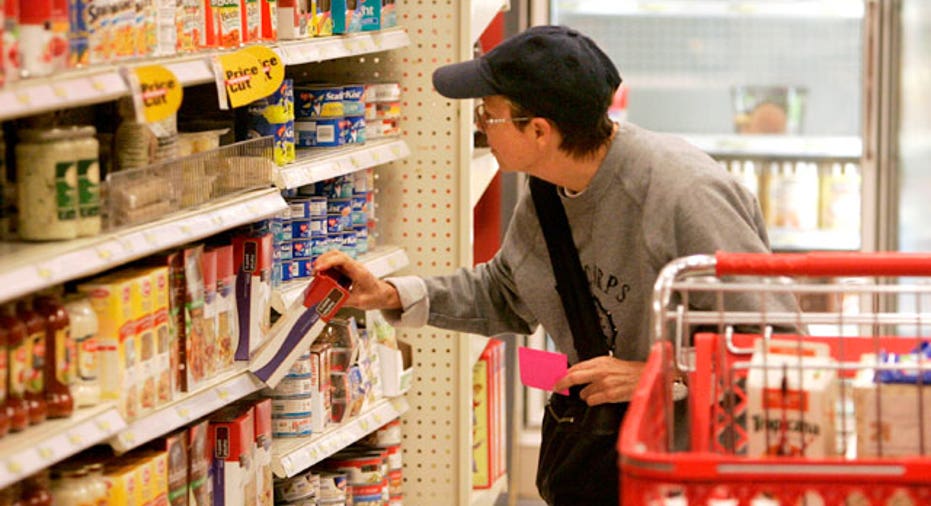Food Stamp Trafficking: Who’s in on the Act?

When it comes to scamming Uncle Sam, fraudsters hatch some very complex plans to milk entitlement programs. But when it comes to defrauding the federal food stamps program—it can be as easy as pushing a button.
Recently, a husband-and-wife duo from Waco, Texas plead guilty to charges of food stamp abuse that allegedly scammed the government of $350,000
Magdalena and Jamal Akhter, who run a convenience store, allowed customers using Supplemental Nutrition Assistance Program (SNAP) debit cards to choose the “cash-back” option when buying items—something that’s not allowed under the program’s rules. The two then pocketed half the cash and paid the SNAP beneficiary the rest.
A similar scheme was uncovered in Tampa that also involved a convenience store owner who reportedly pocketed $735,886 in SNAP benefits 2010 through 2012.
Just last month, a dollar store owner was arrested in New Jersey for money laundering, theft by deception, and food stamp fraud. Muhammed Farooq, owner of four dollar stores in both Essex and Union Counties, and allegedly allowed patrons to buy non-food stamp items like electronics, which aren’t eligible for purchase with a SNAP debit cards, and took in $5.2 million over two-and-a-half years.
Experts say that independently-owned dollar stores and bodegas in low-income areas are where SNAP fraud runs rampant, not the mega-retailers like Wal-Mart (NYSE:WMT), that get a large payout from SNAP. The U.S. Department of Agriculture reports that 82% of SNAP benefits are redeemed at supermarkets and superstores. The remaining 18% of SNAP beneficiary stores is where the majority of scams take place.
In 2012, the USDA reviewed more than 15,000 stores nationwide and permanently disqualified almost 1,400 for program violations. That is up 14% from the 1,215 disqualified permanently in 2011. And in the first five months of 2013, the agency imposed sanctions via fines or temporary disqualifications in 336 stores violating program rules.
What’s more, 536 stores were permanently disqualified for trafficking SNAP benefits already this year, and 336 stores were found in violation of program rules and face sanctions through fines or temporary disqualifications
The FBI says these busts are out of its wheelhouse, with a spokesperson telling FOXBusiness.com, “this isn’t a large violation that we do a lot of work on, it’s usually tied to other charges in a case.”
The Size of the Net
As the SNAP program continues to grow, experts say scams will become more prevalent as enforcement becomes more difficult. Rachel Sheffield, policy analyst at The Heritage Foundation, says SNAP program spending has nearly doubled since 2008, and has grown steadily every year since its inception in the 1960s.
In fiscal year 2012, there were more than 46 million participants in the SNAP program, compared to over 28 million in 2008, spending went from around $37 billion in 2008 to over $78 billion in 2012, she says.
To put it in context, the number of Americans on food stamps now exceeds the combined populations of Alaska, Arkansas, Connecticut, Delaware, District of Columbia, Hawaii, Idaho, Iowa, Kansas, Maine, Mississippi, Montana, Nebraska, Nevada, New Hampshire, New Mexico, North Dakota, Oklahoma, Oregon, Rhode Island, South Dakota, Utah, Vermont, West Virginia and Wyoming.
While the number of people on the program continues to expand, fraud accounts for around 1% of SNAP benefits, according to the USDA. The most recent data shows a drop in trafficking from 1998 through 2008 from 4% of benefits being fraudulent down to 1%.
However, Sheffield says the USDA is overlooking a more common type of fraud: people staying on the system longer than they are eligible.
“They get jobs and won’t report them,” she says. “We recommend requiring participants or state bureaucracies to cross-check the national directory of new hires for new employment. And then, able-bodied adults should be required to re-certify for assistance every three months.”
Providers in on the Act
Mark Dunlea, president of the Hunger Action Network of New York, says provider fraud is more common than beneficiary fraud, though he argues that there is little corruption within the system.
“Think about what bodegas do to survive in New York City—it’s overwhelmingly selling beer, tobacco and lottery tickets,” Dunlea says. “Our government has turned this entire industry into bootleggers and numbers runners, and it’s sad.”
In low-income neighborhoods, food stamps are a substantial part of the food economy, he says. It’s in the best interest of larger corporations like Wal-Mart to participate in the SNAP program ethically, so they can go out and get more SNAP money into their businesses.
“It’s the small guys who are struggling to pay their rent [participating in fraud],” Dunlea says. “For big companies, why jeopardize [the business] just to get an extra $30 or $40 a customer?”
Studies show that those on food stamps spend their dollars only slightly more wisely than the average consumers, when it comes to savings, however Dunlea says beneficiaries are human too, and make bad choices.
“These are people barely keeping their heads above water,” he says. “You would hope the federal government would figure out a way to monitor this. No fraud is good.”